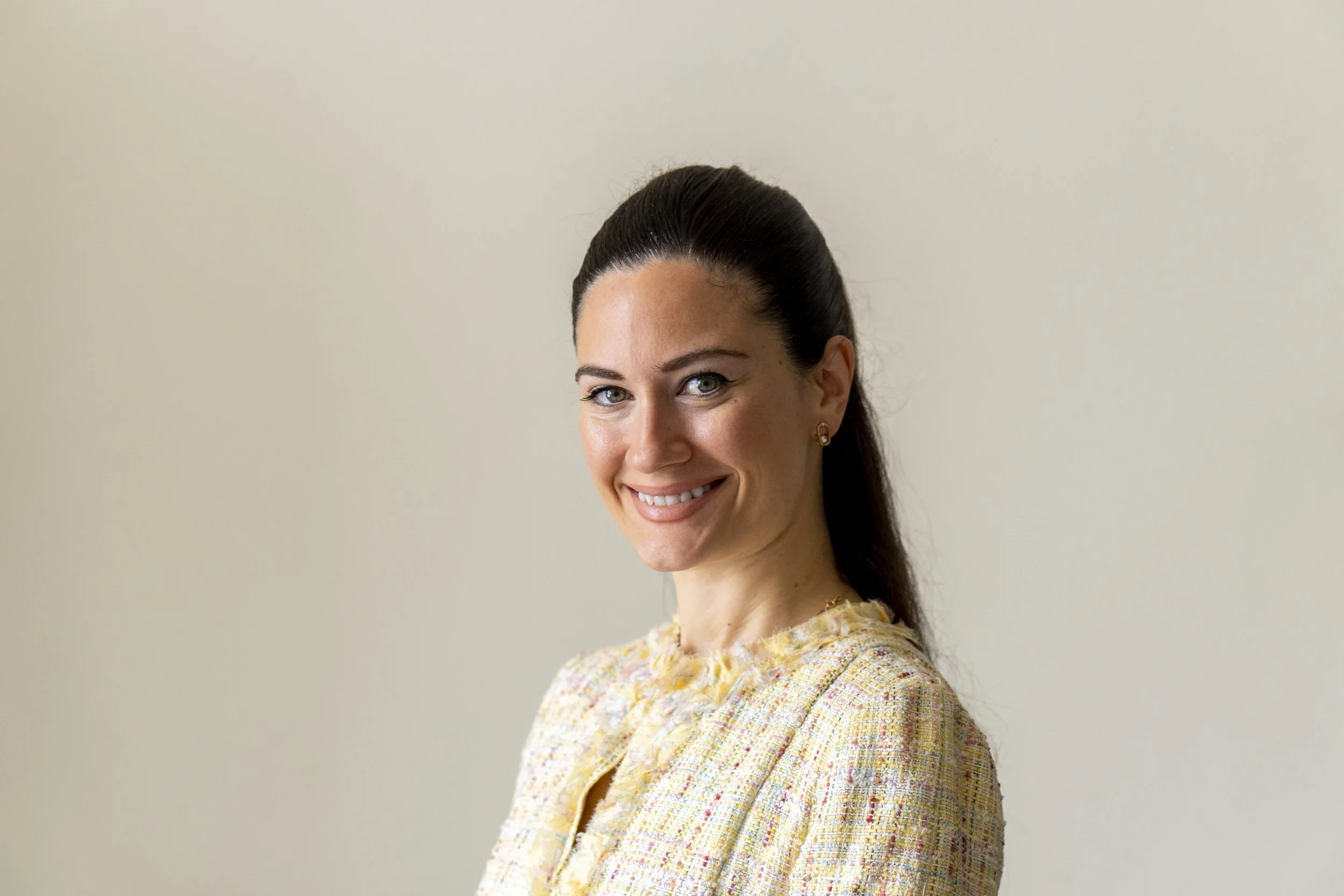Attachment Issues
Attachment is what allows you to form emotional bonds and close relationships with others. The type of attachments you have in your childhood can have a huge effect on your future life.
Attachment theory focuses on the long-lasting bonds in relationships, especially between parents and children and between romantic partners. John Bowlby, the psychiatrist that formulated this theory, believed that attachment is a continuous process that begins at birth and transcends into childhood. The main aspect of attachment theory is that an infant’s primary caregiver (usually the mother) must be available and responsive to their needs. If the child knows their caregiver is dependable, they can develop a sense of security and confidence to explore things and form other attachments. A child’s relationship with their primary caregiver largely impacts their attachment style throughout life; A neglectful parent-child attachment can hinder later romantic relationships.
Our psychiatrist is here to help you, whether you need to heal or want to thrive.
Get in touch to find out how we can help you. Contact us however you feel most comfortable, for example Whatsapp message us, or feel free to call us on +971 56 895 2347. You can also email or simply send us a query via our online form. Instagram message, Facebook chat… whatever works best for you!
Our goal is to make you comfortable.
Stages of Early Attachment
Pre-Attachment Stage - Birth to 3 Months
At this stage, infants have not formed an attachment with any caregiver. Their innate attachment-seeking signals (e.g. crying, fussing), attract the caregiver's attention naturally. The infant's positive responses (e.g. stopping crying, smiling) encourage the caregiver to continue to provide care and comfort.
Indiscriminate Attachment - 2 to 7 Months
In this stage, babies start showing a preference for certain primary and secondary caregivers. Over time through the repetition of nurturance, infants are able to develop trust in the fact that their caregiver will respond to their needs. Here they can start distinguishing between people they know and don’t know, and while they still accept care from others, they will respond most positively to the primary caregiver (usually the mother).
Discriminate Attachment - 7 to 11 Months
At this point, babies display a strong attachment and preference for one specific individual (the primary caregiver). They appear distressed when separated from them (separation anxiety), and display anxiety around strangers (stranger anxiety).
Multiple Attachments - 9 months+
After around 9 months of age, children start to form strong emotional bonds with other caregivers. This includes the father, older siblings, grandparents, and other family members/figures around them.
Parent-Child Attachment
Babies use ‘attachment behaviours’ to seek care and needs-fulfillment from their caregiver. This includes actions such as crying, calling out to the parent, and holding onto the parent. Bowlby and many other researchers discovered that more than providing food, it was comfort, nurturance, and responsiveness that determined a successful attachment. A healthy attachment will form if a caregiver regularly and efficiently meets the child’s needs by responding and providing for the child when they conduct these attachment behaviours.
Psychologist Mary Ainsworth expanded on this by creating a ‘Strange Situation’ test to observe children’s reactions when briefly separated from their mother (separation anxiety), introduced to a stranger (stranger anxiety), and reunited with the mother. Based on the results she described three major attachment styles:
Secure Attachment
These children will interact with the stranger in the presence of the mother, but once she leaves they will become upset, try to find her, and avoid the stranger. When reunited with the mother they are easily soothed and become happy. Although they may be distressed when separated they are secure in the fact that the mother will return. The mother is also able to comfort the child well when they are upset. 65% of the children in the study had this attachment style.
This shows a healthy attachment and is present when a caregiver is sensitive to the child’s needs and responds to their signals as needed. A child becomes securely attached when their physical and emotional needs are met in an appropriate way, and there is comforting contact. The parent must be consistent in their responses so the child knows they can rely on them in times of need.
Insecure-Avoidant Attachment
These children tend to avoid the mother and do not show a preference between the mother and a stranger. When the mother leaves they do not seem to care or find her and just continue to play even in the presence of a stranger. They show little interest when reunited with the mother later and do not seek contact with her when distressed. The mother and the stranger can comfort the child equally well. 21% of the children in the study had this attachment style.
This is an unhealthy attachment that may be the result of an insensitive and neglectful caregiver as the child has learned that their signals and needs will be ignored. They have learned to avoid seeking help from their caregiver as they may often be unavailable when the child is under emotional distress. These children then become physically and emotionally independent from their parent.This attachment style is formed if a child’s needs tend to go unmet and their caregiver cannot be relied on to provide care and comfort. The child becomes disengaged and begins to avoid contact with their parents and others.
Insecure-Ambivalent/Resistant Attachment
These children show worry and anxiety in the presence of a stranger, even when the mother is there. They do not interact with the stranger or play much, and just cling to the mother. They become extremely distressed when the mother leaves, and exhibit greater fear of the stranger. When reunited with the mother, the child may approach her but will resist contact and ignore her attempts to interact, displaying ambivalent behaviours. They are difficult to comfort and can resist attempts to be soothed. These kids cry the most throughout the study and are least willing to explore. 14% of the children in the study had this attachment style.
This is also an unhealthy attachment that can be due to a lack of caregiver availability, and the caregiver not responding to and meeting the child’s needs consistently. These children have failed to develop a sense of security from the caregiver and cannot depend on them to be there when they are needed. They commonly show clingy and dependent behaviour. This attachment occurs when the child’s parent is insensitive and inconsistent with their needs. Due to this, the child cannot be sure to trust or rely on anyone or anything, causing anxiety and fear. Children who only receive occasional attention when distressed may not learn how to adaptively control their emotions.
Later a fourth attachment style was added:
Insecure-Disorganized/Disoriented Attachment
These children display an inconsistent and confusing variety of behaviours when coping with the test. They may become upset and cry when separated from the mother, and then appear relieved when she returns but still avoid or resist her. They may also approach her but then refuse to be held, fall to the floor, start rocking, or show anger towards her. They seem dazed and confused and display a mix of behaviours.
A large percentage of the mothers whose children showed this attachment style were found to have experienced trauma-induced depression during their pregnancy. This lack of a coherent attachment pattern can also be caused by an inconsistency in the caregiver's behaviour, where they are seen as a source of comfort but also a source of fear. This then leads to this disoriented behaviour.
This represents the most insecure attachment style and is presented if the child receives mixed and inappropriate responses from the caregiver (e.g. laughing when the child is hurt/crying when the child is happy). This can be the case if the caregiver is suffering from a mental disorder such as schizophrenia. Due to this, the child does not learn to understand emotions and form a connection with the caregiver. This attachment can also be formed in children who have experienced abuse, as their emotion regulation ability gets damaged.
A variety of studies have supported these attachment styles and have found them to have an impact on future behaviours. Insecure attachments can disrupt social and emotional development.
In addition to the quality and consistency of caregiving, having the opportunity for attachment to a primary caregiver is also vital. Children raised in orphanages do not have access to form a strong bond with anyone. Similarly, children that experience separation from their parents, neglect and trauma, maltreatment, hospitalization, and troubled family life in their early years may also develop attachment issues. When attachments are not formed early in life, a child may not learn how to trust and be empathetic towards people.
Partner Attachment
Adult relationships are said to be mirrored from early attachment styles, as the behaviour of the infant's primary caregiver promotes an internal working model of relationships which leads the individual to expect the same in later relationships.
Securely attached people tend to be open and comfortable with emotional intimacy; they do not worry about the relationship status much. Insecure-resistantly attached individuals long for intimacy and closeness but require constant reassurance and are highly sensitive and needy due to fear of rejection and abandonment. Insecure-avoidant individuals are not very comfortable with closeness and value their independence the most, thus distance themselves from their partner. In relationships, individuals will respond to their partners based on how their caregiver responded to them in childhood. An unresponsive primary caregiver would most likely cause the person to be unresponsive in future relationships. A secure attachment would lead to the child being more loving and caring as they would have received care from a sensitive and responsive caregiver, so they would have more loving relationships and seek emotional intimacy before physical. However, an unresponsive primary caregiver, which causes an insecure-avoidant attachment type, would cause the individual to not care and love much and prefer physical relations without feelings and commitment.
A study found that securely attached children had happy and long-lasting relationships in later life, and insecurely attached children found it hard to form relationships and many were divorced. Additionally, people who suffered childhood abuse had difficulty forming healthy attachments and formed disorganized attachments instead. People with disorganized attachment styles have difficulty regulating emotions and trusting others which is important to form and maintain relationships, so they are more likely to be single or in unhappy relationships
Your attachment type can predict many things about your relationships, including partner selection, how well the relationship progresses, and why it ends. In a way, people find partners that confirm their models. Growing up with an insecure attachment may cause an individual to project or seek similar patterns as adults, even if these patterns are hurtful and damaging.
Secure Attachment
Securely attached adults tend to be more satisfied within relationships. A secure adult has confidence in their romantic partner, feeling secure and connected while allowing themselves and their partner to also be independent. They seek comfort from their partner when they feel troubled. Secure adults offer support and healthy communication when their partner is distressed and can manage conflicts well. These individuals have honest, open, equal, and loving relationships. Their partners are often similar to them in attachment, however, sometimes opposites can also work together. Secure types are capable of dating both insecure -resistant and -avoidant individuals and can help their partner build confidence in a relationship.
Best compatible with: Secure partners
Worst compatible with: Insecure-Avoidant partners
Insecure-Resistant Attachment
These adults are often nervous and stressed about their relationships, and need constant reassurance and affection from their partner. They have trouble being single and are desperate to form a bond. This bond is filled with emotional hunger more so than with actual love and trust. They often stay in unhealthy relationships. When they are feeling less confident and unsafe in the relationship, they start to act overly clingy, demanding, and possessive. Although they try to seek feelings of safety and security by clinging to their partner, their actions tend to push the partner away. This behaviour worsens their fear of abandonment. Due to their fears, they may also view their partner's need for independence as them not loving them and wanting to leave them. A securely attached partner who is confident, reassuring, and can communicate well can be highly beneficial for resistantly attached individuals.
Best compatible with: Secure partners
Worst compatible with: Disorganized partners
Insecure-Avoidant Attachment
Avoidant individuals tend to emotionally distance themselves from their partner and can be dismissive. They believe they are more independent than they actually are and know everything, which can impede crucial communication within the relationship. During conflict, they may leave and isolate themselves as they don’t want to face a situation that could hurt them. They have the ability to “check out” or “shut down” emotionally, even in extremely emotional situations, where they turn off their feelings and just don’t react. They can learn a lot from insecure-resistant partners as they are essentially opposite and can balance each other out. Although they would need to work on communication, a resistant partner can encourage confidence and promote emotional expression in them. Also as avoidant individuals tend to take the lead, this would bring ease to a resistant individual.
Worst compatible with: Insecure-Resistant partners
Worst compatible with: Disorganized partners
Disorganized Attachment
These individuals tend to live in a disoriented, ambivalent state in which they are scared of being too close or too distant from others. They are unable to control their feelings and cannot avoid their anxiety. Due to this they become overwhelmed and experience emotional outbursts. They see relationships as a way to get their needs met but feel that they will get hurt if they get close to a partner. Thus even though they want to seek safety and comfort from the partner, they are afraid to be close to them. These adults can find themselves in rocky relationships with many ups and downs. At times they may try to cling to their partner when feeling low and rejected, but then feel trapped when close to them. Although they are scared to be abandoned, they struggle to be intimate. Individuals with disorganized attachment seek partners they can either share a bond of mutual understanding with or partners who are opposite to them and can take them out of their comfort zone. Partners with avoidant attachment styles are often hyper-aware, and thus can help these individuals with self-awareness. Securely attached partners would be the best fit however as they could help balance out their fears and bring trust and healthy communication into the relationship.
Worst compatible with: Secure or Insecure-Avoidant partners
Worst compatible with: Resistant partners
Attachment styles can change over time through a conscious effort to change aspects of your relationship style that you see as maladaptive. If you or your partner is exhibiting behaviours that are damaging the relationship you can work together to move in a different direction. As this can be difficult, a psychologist can assist you in what to do through individual or couples therapy.
Attachment Disorders
The Diagnostic and Statistical Manual of Mental Disorders (DSM) recognizes two main attachment disorders. They are both generally developed and diagnosed in children between 9 months and 5 years of age.
Reactive Attachment Disorder
Reactive Attachment Disorder (RAD) is a serious condition that is seen in children who have been unable to develop a healthy attachment to their caregiver. Due to this they do not seek out or respond to comfort from caregivers when distressed, causing them to be consistently withdrawn. They also resist physical comfort from a caregiver and avoid eye contact. Children with RAD display limited emotional responses and a lack of remorse, even where emotion is expected. They tend to be hyper-vigilant, irritable, aloof, unengaged, sad, and fearful. They display patterns of withdrawal and may not be able to respond socially or emotionally to others. Additionally, children with RAD may have anger and control issues, avoid physical affection, dislike interacting with other children, and have difficulty showing affection.
Cause
RAD is caused by abuse (physical, emotional, or sexual) and severe neglect. However, the majority of children who have been abused or neglected do not develop the disorder. Another risk factor may be repeated changes in caregivers which have caused limited opportunities for the child to form attachments.
It is a rare condition, occurring in around 1% of the general population of children. However, this may also be because cases can go undetected and unreported.
Diagnosis
To be diagnosed with RAD a child must display a pattern of withdrawn behaviour towards caregivers, characterized by rarely seeking comfort when distressed or not responding to comfort when it is offered. The child must have also experienced neglect or abuse where their early caregiver was unable to meet their physical or emotional needs.
The symptoms should not meet the criteria for autism spectrum disorder.
Treatment
Treatment can include child psychotherapy, family therapy, and parenting training. Art or play therapy could also be beneficial as the withdrawn child may prefer to express themselves in non-verbal ways. As it can be a difficult experience for the caregiver as well, psychotherapy can be advisable for the parents too.
Disinhibited Social Engagement Disorder
Disinhibited Social Engagement Disorder (DSED) is also an attachment disorder caused by a lack of attachment formation and neglect. The symptoms of DESD are less severe than RAD, however, it causes difficulty for a child to develop healthy relationships and engage in appropriate ways. Children with DESD are overly open and eager to interact with strangers with no hesitation. They may seek affection from strangers and try to go up and hug and sit on their laps. These children have little preference for trusted adults over strangers and don’t check in with their caregivers before doing something they should not. They may even leave their caregiver and go wander off with a stranger instead. The child may try to seek comfort from strangers and not exhibit distress when the caregiver is not present.
Cause
DSED typically occurs due to the absence of a solid, long-term caregiver. Children that have grown up in settings where they could not form close meaningful attachments, such as orphanages and foster homes may also develop DSED. Childhood trauma, extreme abuse (physical, emotional, or sexual), and neglect also put kids at risk for DSED, especially if they don’t have a caregiver to offer comfort.
Diagnosis
Not every outgoing child who is eager to befriend strangers has DSED. Toddlers do tend to explore away from their caregivers and towards others and hit independence based milestones generally. What separates this from DSED is the caregiver-child bond and whether the child knows there is someone there keeping them safe or not.
Treatment
Treatment for DSED usually includes the child’s entire family and consists of either individual or group therapy. It can also include art and play therapy. Parent training can also help to provide tools for improving everyday interactions and help the child feel cared for and safe.
There is no formal diagnosis for attachment disorders in adulthood, however, you may still experience attachment issues that linger from undiagnosed childhood attachment disorders. As a child becomes an adult, any unresolved attachment disorders will shift and start to interfere with later life, causing emotion regulation and relationship problems.
Symptoms of Attachment Issues
Signs that a child may have attachment issues include:
Extreme clinginess
Failure to smile
Inconsolable crying
Bursts of anger
Lack of eye contact
Lack of affection/need for caregivers
Lack of remorse
Inappropriate behaviour with strangers
Extreme lack of fear of strangers
Resistant behaviours
Self-comforting behaviours
Withdrawn and unengaged
Bullying others
Early Warning Signs
An infant may have attachment issues if they:
Don’t coo or make sounds
Don’t seem to notice or care when you leave them
Don’t reach to be picked up
Reject efforts to be calmed/soothed
Aren’t interested in playing
Don’t follow you with their eyes
Many early symptoms of attachment disorders are similar to early symptoms of conditions like autism and ADHD, so it is important to get a professional assessment from a psychologist.
Risk Factors
Other than significant neglect/deprivation, trauma, abuse, repeated changes in primary caretakers, and growing up in institutional settings, some possible risk factors for attachment disorders include:
Prenatal exposure to alcohol or drugs
Caregivers with poor parenting skills
Parental anger issues
Parents with psychological conditions
Treatment
Early intervention is key in the treatment of attachment disorders. Even if the caregiving quality is improved and made more consistent, the symptoms of attachment disorders won’t resolve without therapy. Without this treatment, individuals may experience ongoing issues throughout their lives. Therapy can teach children with attachment issues what healthy relationships and bonds look like, and show them ways to form these bonds with their caregivers. It can also help them develop coping methods for the associated symptoms. Therapy can also improve other comorbid disorders.
Adults that were not able to resolve their attachment issues in childhood and who see the effects of those issues in their lives can also benefit greatly through therapy. It can help you explore childhood experiences that resulted in the insecure attachment formation, and cause you to gain closure for those lacking bonds and feelings. Through psychotherapy, you can also learn to move on, develop healthy attachments, and maintain romantic relationships. With a psychologist, you can identify the certain patterns that cause problems in your relationships, develop tools to deal with them, and also learn new techniques to connect with people. This then allows adults that experienced attachment issues to build strong bonds with their friends, parents, children, partners, and others.
Family Therapy
Typically, therapy for childhood attachment problems includes the child and caregivers. It often involves fun activities that enhance the attachment bond between the family, and help the family understand the symptoms of the disorder better. This can teach the child, caregivers, and other family members how to better interact and respond appropriately.
Individual Therapy
Individual therapy allows your past experiences/your child’s experiences to be brought to light, behaviour to be monitored, and emotions to be examined through sessions with a psychologist. This focuses on identifying the underlying issues and reducing problematic behaviours. It can help you better understand the attachment disorder and how to cope with it. The type of therapy needed will depend on several factors, including what issues were experienced in early childhood and what problems you want to resolve now. Some possible examples could be humanistic therapy, cognitive therapy, behavioural therapy, holistic therapy, and experiential therapy.
Couple Therapy
For adults struggling with their romantic relationships due to early attachment problems, couples therapy can be beneficial. This can help your partner better understand your experiences and struggles, as well as teach you how to adaptively act in times of conflict and distress. Couples therapy can provide you and your partner with the tools to further strengthen your relationship.
Play/Art therapy
Play therapy or Art therapy are effective in helping young children understand positive and negative behaviour better. Art therapy can allow them to better regulate their emotions and address their behaviour. Play therapy can help teach them appropriate skills for interacting with others and how to act in social situations. This can then help them work to develop healthier relationships.
Parenting Skills Classes
This teaches parents and caregivers about attachment disorders as well as necessary parenting skills to form more secure attachments with their children.
Social Skills Training
From this children can learn how to appropriately interact with others in social settings. They can practice skills with their therapist which allows them to gain confidence and experience in how to act.
Related Conditions
A failure to form secure attachments in childhood can have a negative impact on many aspects of later life.
Securely attached children develop greater self-esteem and self-reliance, and are able to perform better academically, socially, emotionally, and behaviourally, than those with attachment issues. They also experience less anxiety and depression. Children with attachment disorders are at higher risk of having lower IQs and test scores, having language problems, and getting into legal trouble.
Children with attachment disorders are also at a higher risk to have other concurrent disorders. A study found that 85% of children with an attachment disorder had another psychological condition as well. It found that from those children diagnosed with RAD or DSED:
52% also had ADHD
29% had conduct disorder (CD)
29% oppositional defiant disorder (ODD)
19% had PTSD
14% had a phobia
14% had an autism spectrum disorder (ASD)
1% had a tic disorder
Michelle Estekantchi, M.Ed.
Licensed Psychologist
Michelle Estekantchi is a Licensed Psychologist with a Master’s degree in Counseling Psychology from Memorial University (Canada). She works with children, adolescents, and adults across a range of issues including anxiety, depression, relationship issues (peer, family), burnout, and self-esteem issues. Michelle also conducts psychoeducational and ADHD assessments.
Dr. Manuela Paone
DHA-Licensed Psychologist
Dr. Manuela is a DHA-Licensed Clinical Psychologist (Dubai) with active licenses in the UK and Italy. She has over 20 years of experience supporting adults through a range of challenges including anxiety, depression, and relationship issues (parent-child as well as marital). Dr. Manuela has a special interest in neurodivergence, including Autism Spectrum Disorder and ADHD. She has a wealth of experience in the UK and Middle East, which has provided her with an opportunity to work with people from diverse cultural contexts, integrating culture, religion, and personal background into her work.
Our psychiatrist is here to help you, whether you need to heal or want to thrive.
Get in touch to find out how we can help you. Contact us however you feel most comfortable, for example Whatsapp message us, or feel free to call us on +971 56 895 2347. You can also email or simply send us a query via our online form. Instagram message, Facebook chat… whatever works best for you!





































